Shingu: Secret of the Stellar Wars (US)
Introduction
When was the last time you bought something as a blind buy? In this Internet Age in which we live, with everything connected and intertwined, it's hard to avoid all opinions, actually judge a book by its cover and fork over the cash and just hope. It was a different matter when I was a child. Many's the videotape that ended up on my shelf by dint of a low price point and an attractive cover. It's how I wound up with Urotsukidoji and Junk Boy, Wings Of The Apache and Dragonheart, although when it comes to DVDs, my duties as a reviewer require me to partake of the lucky dip on a regular basis. Otherwise all my purchases would be informed by online reviews and IMDB, supplemented by Mark Kermode, word of mouth, and as a last ditch, Paul Ross. My last random purchase was American Pie to fill out a 3 for £20 deal, and even then I knew roughly what I was getting. The closest I get to a blind buy nowadays is buying something on the strength of just one solitary recommendation. It was a sole retrospective waxing nostalgic about Shingu, an alien invasion/mecha meets slice of life anime that piqued my interest to the point where I had to lay down some money. Anime isn't the cheapest of commodities though, and buying a show at random isn't to be taken lightly. That it's a US release makes things easier, both in terms of retail pricing and exchange rate. When you can get a 26-episode series for less than the customs limit, blind buys don't seem so much of a risk.
It's the year 2070, and the Japanese government have just confirmed the existence of extra-terrestrials. It's hard not to when a massive great UFO appears over Tokyo, its presence disrupting the city's infrastructure and causing blackouts. It also appears as if Earth has an enigmatic protector, when a giant white figure known as Shingu appears in the sky and repels the invasion. Aliens, mythical figures, conspiracies and intergalactic visitors just don't mean that much to Hajime Murata, a second year middle school student in the town of Tenmo. He's more intent on his education, growing up, and just being a teenager, as well as shouldering the responsibility of being class representative. His family moved to Tenmo from Tokyo four years previously, and while his father is an often-absent businessman, he's settled in well. He isn't expecting the upheavals that begin when a new student, Muryou Subaru enters his class. The first thing that Muryou does is have a confrontation with the student vice president Kyoichi Moriguchi on top of the school roof, and Hajime walks into the middle of some serious telekinesis. Then it transpires that pretty much all of the student government, Moriguchi, president Hachiyou Tsumori, vice president Nayuta Moriyama, and Shun Morihata are all special, gifted, chosen in some way. It quickly becomes clear that Tenmo is the focus of extra-terrestrial activity, there are aliens all over the place, and everyone in town except Hajime's family seems to be in on the secret. As he gets more and more involved, and uncovers more of the truth, it becomes apparent that Hajime is destined to play a big role in what is to come. What's surprising is that the news isn't all that shocking.
The story unfolds in 26 episodes, split across 5 discs.
Disc 1
1. The War Record Begins
2. Muryou's Power
3. The Name Is Shingu
4. The Time To Move
5. Gazing Eyes
Disc 2
6. A Peaceful Battle
7. Your Smile
8. A Humble Feast
9. After The Rain, More Rain
10. For Tomorrow
Disc 3
11. Thank You, Courage
12. Despite Friendship
13. Secret Village Hometown
14. Our Summer
15. Father's Return
16. Calmly, but Suddenly
Disc 4
17. Chaotic Apology
18. Inherited Sorrows
19. Virtuous Fist
20. Impatient Optimism
21. The Helpers Meet
Disc 5
22. Gazing Beyond
23. Federation and Alliance
24. Destined Ones Gather
25. An Empty Soul Awakens
26. School Records Continue
Picture
Shingu gets a 4:3 NTSC transfer, as you would expect from a Region 1 release. The image is clear and sharp, with strong colours, and naturally there are none of the issues associated with NTSC-PAL conversion. What I wasn't expecting was the quality of the animation, which is practically Ghibli quality throughout in terms of character and world design, consistency and sheer level of detail. Made around the turn of the millennium by Madhouse, Shingu has all the hallmarks of being an old-fashioned cel-acetate animation, the composite layering of images, the beautiful artwork, and the apparent love shown to the material. On the other hand it has the cleanliness and consistency of a modern CG animation, which makes it hard to tell which it is. It may indeed be a combination of both, certainly the Shingu mecha/protector seems the kind of visual that would be easier to accomplish in a mainframe, but the bottom line is that you wind up not caring, and just appreciate the animation as a whole.
4:52 into episode 21, there is a black frame and accompanying sound dropout, but that was the only technical flaw I noticed.
Sound
You have a choice between DD 2.0 English and Japanese, along with translated subtitles and a separate signs only track. The dialogue is clear in both versions, and the stereo offers a noticeable amount of separation to the sound design. The English track is a smidgen more strident, but otherwise there is little to distinguish the two. Except that the dub is of the sort that I usually take pains to avoid, with very much a Saturday morning toon feel to it that offers caricature instead of character. This is definitely a show to watch in the original language with the subtitles on.
Yuji Ohno's soundtrack is outstanding, complementing the tone of the show perfectly. Gentle and whimsical, it reflects a rather sedate slice of life, although it has the chops to up the tempo when the action requires. The tone of the show is advertised with the opening credits, a tune that sounds very much like a school anthem urging students on to successful and productive lives, albeit sung with the voice of an angel. The end credits are accompanied by what can only be described as easy listening, although it does get the toes tapping.
Extras
Shingu gets a sturdy card case, emblazoned with the show's characters and the logo. Inside you'll find 5 thinpack cases that house the discs, each with cover art reminiscent of the individual releases, as well as a 44-page booklet that collects the individual pamphlets that came with the single releases. This is well worth a read, as it contains production notes, character descriptions, and a look at the world of the future, as well as much more besides. It's best to read each section after you watch the relevant disc, as each section is specific for that disc, and reading ahead would otherwise spoil what is yet to come. The final section also offers some mini-comics, as well as an in depth interview with director Tatsuo Sato.
When it comes to extras on disc, each volume follows the same format.
The Original Production Notes are all there, around 30 pages to each disc, although they are in Japanese. If your foreign language skills are good, then you can zoom into each page to get a closer look.
Each disc gets bios for the characters prominent in that volume.
There are line art galleries on each disc with around 20 images in each.
Finally each disc has trailers for Boogiepop & Others, Gravitation, Comic Party, His and Her Circumstances, K.O. Beast, and Dangaizer 3
Disc 4 also gets the US trailer for Shingu, while disc 5 has the textless opening.
Conclusion
I've often said that if there is one thing I look for in anime, it's originality. I want to be impressed by something I haven't seen before, new stories, new styles, or simply just characterisations that step away from the usual stereotypes. Shingu: Secret of the Stellar Wars ticks that box, and ticks it with a big fat permanent marker, although at first glance it doesn't look all that atypical. After all, the 'teenagers being called on to defend the Earth against alien invasion' plot is a staple of the medium, with the angst drenched magnum-opus Neon Genesis Evangelion having spawned countless imitators over the last ten years or so. With the almighty Shingu protector of Earth, piloted by a teenage girl aided by her school friends, it looks as if we are delving head first into more tortured emotions, almighty battles and a thinly veiled allegory for adolescence. Except Shingu takes the whole concept and turns it on its head, offering something light, entertaining and wholly pleasant. It's like comparing Christian Bale's Dark Knight to Adam West's Batman, two completely different takes on the same concept, yet both enjoyable.
Shingu: Secret of the Stellar Wars is set in the world of the future, a world that has been observed by aliens for millennia, and which is rendered unique as it has a protector in the form of Shingu, a vast figure that can be summoned up by specially chosen defenders to fight off any threat to the world from without. Such a powerful figure serves to attract as much alien attention as it diverts, and in the year 2070, the Earth is rapidly becoming the focus of galactic attention. This all comes to a head when a UFO appears in downtown Tokyo and the governments of the world have to admit that aliens do exist. What makes Shingu different is that the alien threat isn't actually that much of a threat. What the characters and we discover is a thriving galactic community, members of which look on Earth with as much amusement as curiosity. At the same time, this is a future humanity that is finally at peace, a world which at first glance isn't all that different from our own, but has achieved that wished for utopia where everything is clean and pleasant, and no one wants for anything. It's a world that is poised and ready for alien contact, indeed ready to take its place in the galactic community, and as such Shingu is called on less to defend the world against overwhelming odds, as it is to shepherd away careless aliens who haven't bothered to read the signs and wandered onto the grass.
The story is told from the point of middle-schooler Hajime Murata, a recent arrival to the town of Tenmo. He narrates the story, and even occasionally breaks the 4th wall, much to the consternation of his sister Futaba. As he learns, the community at Tenmo has long had an affinity with aliens, and have kept the secret and the world isolated for centuries. He discovers that no one native to the town is all that surprised at the turn of events, as opposed to outsiders like his family who have only recently moved to the town. While the revelation of alien existence is certainly news enough, it's when a new transfer student, Subaru Muryou arrives that he gets drawn into the hidden conspiracy of Shingu, as he learns that his own classmates are at the heart of the Earth's defence. The ones chosen to protect the Earth have special powers, but it seems that they are not alone in their abilities as Muryou demonstrates. It also becomes clear that Tenmo is almost an intergalactic crossroads, with aliens and extra terrestrial diplomats showing up all over, and with some even resident, relishing their time among humans. Then there is conspiracy upon conspiracy, as while the people of Tenmo and Shingu have been working to keep aliens secret, and Earth relatively isolated, the nations of Earth are at the same time working to take their place in the galactic community, negotiating with alien representatives. At the same time, while the Galactic Federation may be kindly disposed to Earth, there are other factions that want to possess the power of Shingu, and random aliens keep popping up to test Earth's defences.
And here's the thing. While this is the main thrust of the story, all of it happens in the background. Shingu is really more a nostalgic look at the memories of school life, the more pleasant aspects of adolescence, as not every childhood has to be a mass of angst and hormones. The Japanese title of the show translates to Record of the School Wars: Muryou, and that is far more apt a moniker. It really focuses on the disruption that occurs when Muryou transfers to his new school, throwing the student government off balance. (That's perhaps the most futuristic image of the show, the radical rethinking of the school structure, where it's actually the students who run the school, have a bigger input in their lessons and their ultimate education, and where teachers act more as guides and helpers, rather than authority figures) The student government also happen to be the four chosen as protectors; it's tomboy-ish Nayuta Moriyama who takes on the form of Shingu, while Shun, Hachiyou and Kyoichi act as her support. It's Muryou rubbing Kyoichi the wrong way that introduces Murata to the secret, and he naturally gets drawn into the conspiracy. But what is more immediately apparent is that Muryou, in his traditional school uniform is out of place, something that annoys Kyoichi and Nayuta, and Murata gets a little grief simply by association. This develops into a friendly rivalry over the school year, especially as the outsiders Muryou and Murata insist on being an integral part of the school and community activities, while Nayuta Moriyama has her own issues to deal with there. Of course there is no great antagonism here, and as time passes, friendly rivalries develop into genuine friendship.
That's what I love about this show, it's so gentle and unassuming, yet totally entertaining. I got lost in the tale of everyday school life, with a host of wonderful characters, watching friendships develop, the odd occurrence of first love, seeing the pleasure taken in school activities like Sports Festivals and Cultural Festivals, day trips, vacation times, just the unexpected sight of school kids being pleasant to one another. And occasionally they would save the world a bit. The show's slice of life outlook contributes significantly to its appeal, yet the intergalactic politicking that happens in the background keeps the story 'one episode more' addictive. Of course it wouldn't be much of a story without a narrative climax, and as we get to the final episodes, the slice of life aspects diminish to take us to a suitable emotional and explosive conclusion, and I guess that at this point that some of the angst that develops is appropriate, but it never overwhelms and the conclusion stays true to the light tone of the show.
If anime has the equivalent of easy listening, then Shingu would be it. It's a flawlessly pleasant experience that I just can't get enough of, and this boxset takes pride of place among my anime collection. Of late, MVM have been picking up stray licences like Black Lagoon and getting some older titles like Gravitation and FLCL to the UK. Shingu is another title that deserves Region 2 exposure, and the sheer quality of animation means that it's unlikely to ever date, and even after 7 odd years it still looks crisp and fresh. Highly recommended.

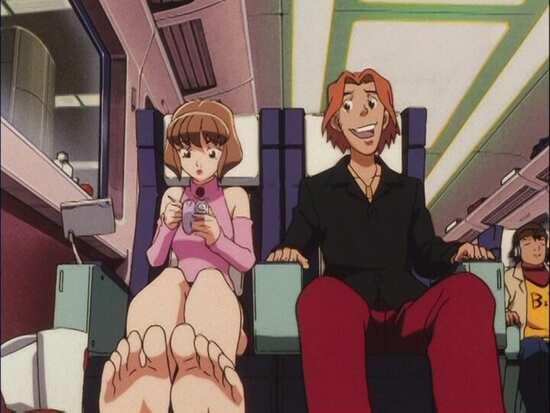
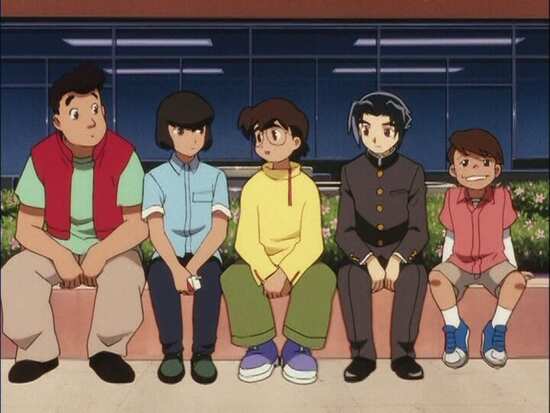
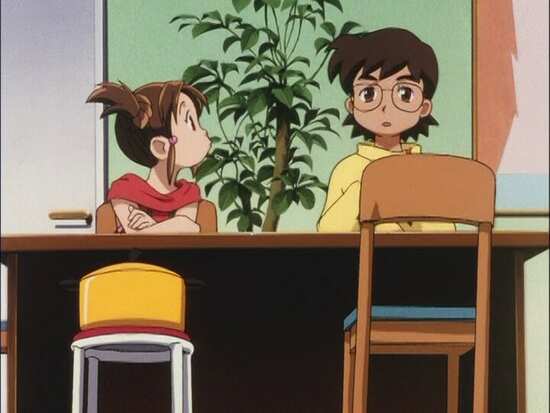
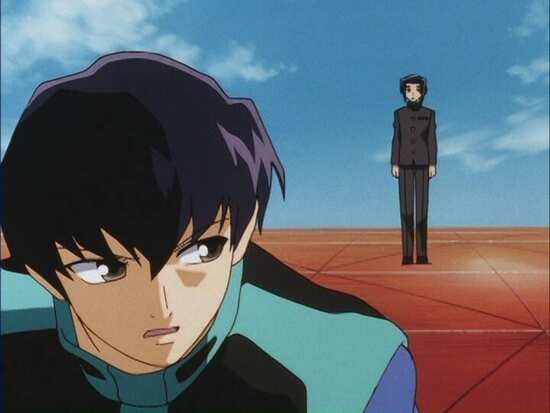
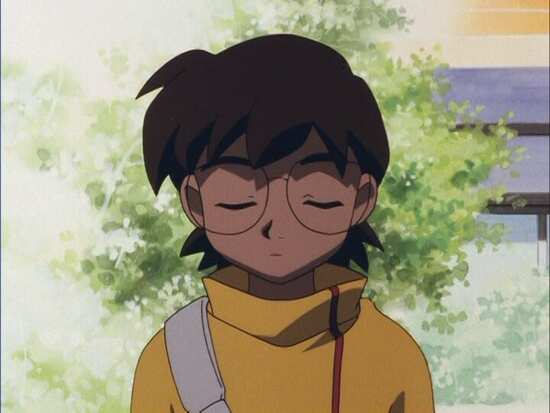
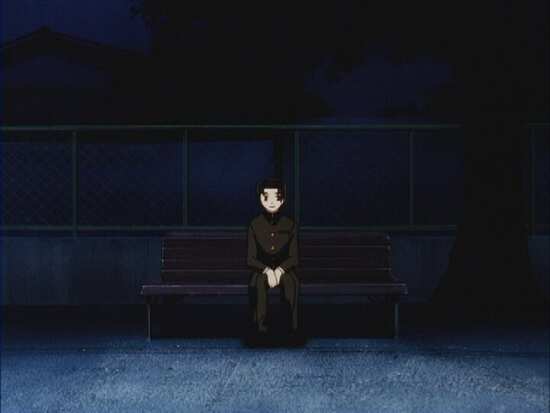

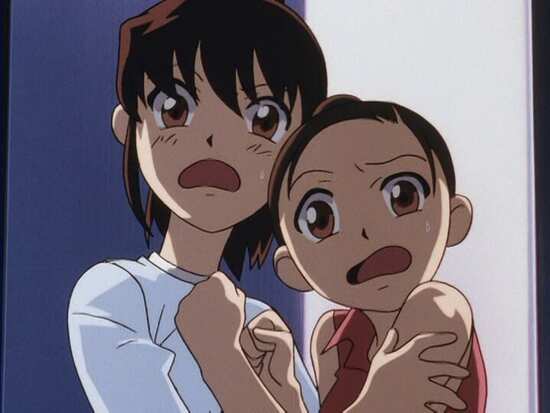
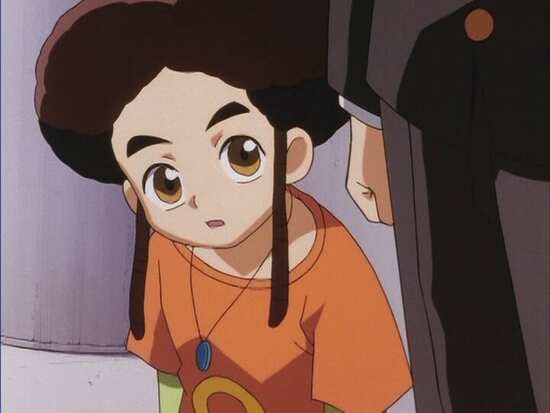


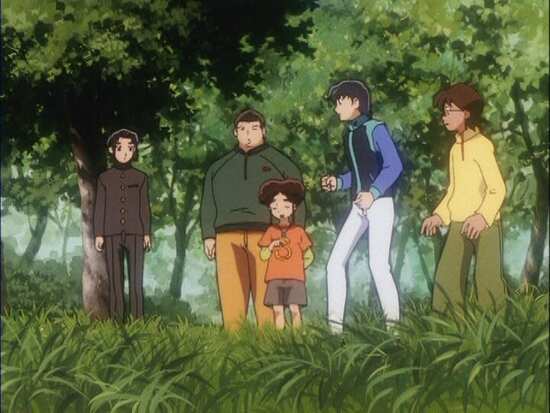
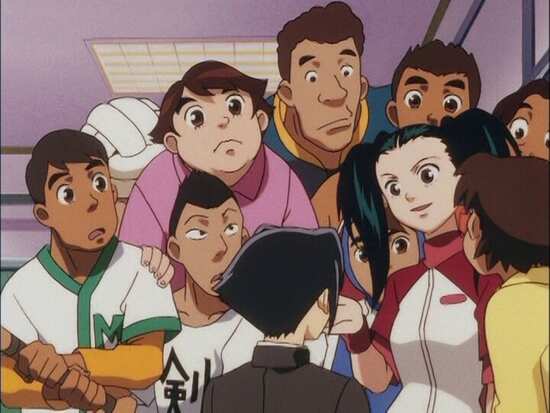


Your Opinions and Comments
Be the first to post a comment!